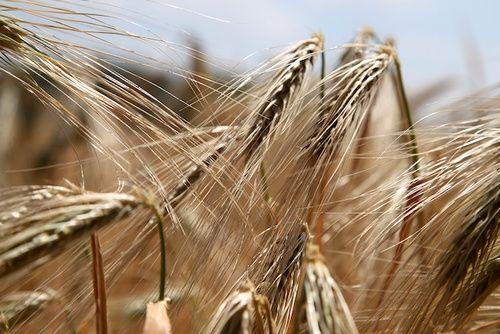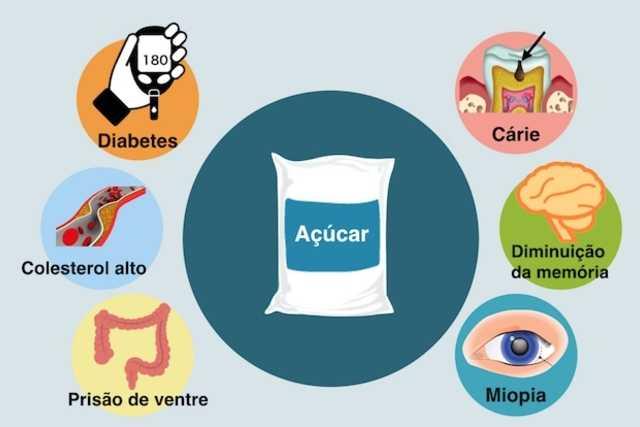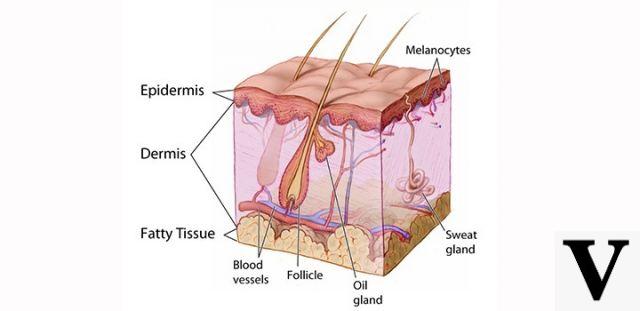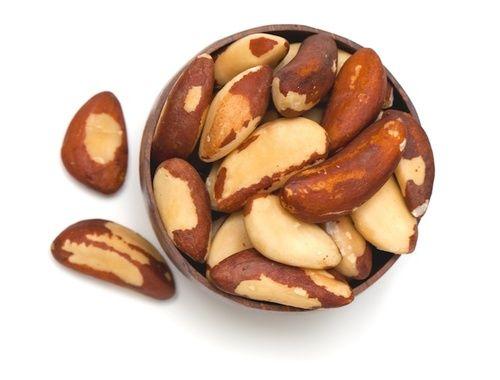Losing Weight: When To Worry?
What does it mean to lose weight?
Weight loss, in the medical field, refers to a reduction in the total body mass; this is caused by the reduction of: fluids, fat mass (body fat and / or adipose tissue) and lean mass (ie mineral deposits in bone, muscle, tendons and other connective tissues).
Weight loss can occur either involuntarily, due to an illness, or due to a conscious effort aimed at improving a state of real (or perceived) overweight / obesity.
The so-called "inexplicable weight loss", that is not caused by the reduction of caloric intake with respect to energy expenditure (voluntary or not), is called cachexia and can be a serious medical symptom.
Intentional weight loss is commonly identified as weight loss but, in accordance with what is mentioned in the introduction, it represents a totally different process from cachexia.
How to estimate weight loss in a medical setting?
Unintentional weight loss can be the result of actual weight loss (fat depletion), loss of body fluids, muscle wasting, or even a combination of these elements.
Unintentional weight loss is considered a medical problem when it occurs: at least 10% of the total mass in six months, or at least 5% in the last month.
Another medical criterion used to estimate the fitness of total weight (in normal adults, not in children, much less in athletes) is the body mass index (BMI). This involves placing the patient in one of the following categories (representatives of the ranges): underweight, normal weight and overweight. It follows that, within the same category, a quite important variation can also occur (eg 10kg). On the other hand, in some elderly people, similar or even lower fluctuations within normal weight can be much more concerning than interpreted by the BMI.
What are the characteristics of involuntary weight loss?
Unintentional weight loss can occur due to an insufficiently nutritious diet, as a result of malnutrition.
Unintentional weight loss can also cause: pathological processes, changes in metabolism, hormonal changes, drugs or other treatments, pathological changes and decreased appetite.
Intestinal malabsorption can lead to involuntary weight loss and can be caused by: fistulas, diarrhea, drug-nutrient interactions, enzyme absence or insufficiency and mucosal atrophy.
What is cachexia?
As anticipated, unintentional, progressive and exhausting weight loss is sometimes referred to as cachexia. This also differs from weight loss in the presence of a systemic inflammatory response and is often related to poor diagnostic outcomes.
In the advanced stages of a progressive disease, the metabolism can change causing weight loss even through a balanced diet, without inducing an increase in the sense of hunger. This condition is called: anorexia cachexia syndrome (ACS), often impossible to cure even through integration.
Symptoms of involuntary weight loss for ACS include: severe muscle depletion, loss of appetite and early satiety, nausea, anemia, weakness and fatigue.
Unintentional weight loss is a diagnostic criterion for cancer, type 1 diabetes mellitus, thyroid discomfort, etc.
What effects can severe involuntary weight loss have?
Unintentional and severe weight loss can reduce the quality of life, compromise the efficacy of a therapy or recovery, worsen the disease phases and constitute a risk factor for the increase in the mortality rate.
The resulting malnutrition can compromise every function of the human body, from single cells to the most complex functions of the body: immune response, wound healing, muscle strength (e.g. respiratory muscles), kidney function, thermoregulation, menstruation, etc.
Furthermore, associated malnutrition implies a lack of electrolytes, vitamins etc. The infirmity that often accompanies severe weight loss can also lead to other complications such as pressure sores.
According to data from the United Kingdom (Malnutrition Universal Screening Tool - MUST), up to 5% of the general population is underweight and more than 10% of those over 65 are at risk of malnutrition.
Popular Diets, Obesity and Health
Nowadays, diets so to speak "innovative" (or rather that move away from the nutritional principles of scientifically founded balance) have become almost a "fashion"; in fact, even if it seems a paradox, the diets that are "trendy" are precisely those "against the trend".
Will they really be that effective? Who follows them is actually going to lose weight?
The answer is certainly not simple; the only useful tool to satisfy such curiosity is statistics, even if sometimes this means tends to distort reality.
A rather dated study, entitled "Popular diets: correlation to health, nutrition, and obesity", attempted to evaluate the real weight loss effectiveness attributable to "trendy" diets. Unfortunately, since this is a not very recent experiment (2001), from a scientific point of view it is necessary to keep in mind that its results may NOT correspond to the contemporary general framework.
Personally, I believe that the popular dietary "trend" has remained quite unchanged and is based on some very different principles (still a matter of debate): elimination of meat and fish, reduction of carbohydrates, increase of proteins, etc.
NB. These indications are to be contextualized with reference to the guidelines for a balanced diet, in which fats represent about 25-30% of the total energy, proteins about 0,8-1,5g / kg of physiological weight (the percentage varies much based on the overall energy of the diet) and carbohydrates make up all the remaining calories (50-60%).
However, those who followed a certain type of diet at the time could have significantly lost weight or gained weight today; even if, according to the statistics, the research sample was made up of subjects who started nutritional therapy a long or short time before. Ultimately, the outcome of these researches is to be considered a general reference; certainly, it is not an absolutism on which to build inalienable dietary rules. To do this, much more statistics, clinical trials and experimental applications on humans are needed; in other words, everything that has been done to establish guidelines for a healthy and correct diet.
Returning to the above publication, this has set itself the goal of examining the correlation between a set of nutritional indicators and health status, and the use of so-called popular diets.
The project involved the involvement of the "Continuing Survey of Food Intake by Individuals (CSFII) 1994-1996" in order to examine the correlation between "trendy diets" and "nutritional quality"; the evaluation parameters were: the Healthy Diet Index (HEI), the Body Mass Index (BMI) and consumption patterns.
The "prototype" diets analyzed were vegetarian (elimination of meat, poultry and fish) and NON vegetarian. The latter have been further divided into: low carbohydrate concentration (<30%), medium (30-55%) and high (> 55%). Then, within the one with a high carbohydrate content, the subjects are again divided into those who follow the food pyramid (USDA Food Guide Pyramid) and those who DO NOT use it (obviously, this is the pyramid in use in 2001, however not too different from the contemporary official one). Those who followed this principle had to respect a lipid percentage <30% and consume food according to the recommendations. Finally, the group that did not respect the pyramid was further differentiated into: low fat (<15%) and moderate (15% -30%). To complete, a review of the scientific literature was also conducted.
The research sample included 10014 adults, aged 19 or over, who were analyzed by CSFII (1994-1996).
The CSFII results indicate that diet quality (measured by HEI) appeared higher in the high carbohydrate group respecting the pyramid (82,9) and lower in the low carbohydrate group (44,6 ).
Total energy intake appeared to be lower for vegetarians (1606 kcal) and in the high-carb low-fat group (1360 kcal).
In women, BMI appeared lower in the vegetarian group (24.6) and in the high-carbohydrate low-fat group (24,4). In men, the BMI seemed lower for vegetarians (25.2) and in the group that met the pyramid with a high concentration of carbohydrates (25.2).
An extensive review of the literature was also carried out, suggesting that weight loss is independent of diet composition (nutritional percentages). The moderation of total energy is instead the "key" variable associated with weight loss in the short term.
NB. This last conclusion is to be taken with a grain of salt, as both the metabolic impact of nutrients, both the anabolic load of meals (glycemic-insulin, also linked to portions), and the temporal management of the diet, contribute to the balance of body weight and the ratio of lean mass to fat mass
Ultimately, this study showed that high-carb diets with low or moderate fat content tend to be less caloric than others. However, the lower calorie intake was attributed to the vegetarian diet. Diet quality, as measured by HEI, was highest in the high-carb groups and lowest in the low-carb groups. BMI was significantly lower in men and women on a high-carbohydrate diet, while higher BMIs were observed in subjects with a low-carbohydrate diet.
Slimming Therapeutic Techniques
The most recommended slimming therapeutic methods are the less intrusive ones, namely: the adjustment of eating habits and the increase of physical activity.
In this regard, the World Health Organization (WHO) suggests a reduction in the consumption of processed foods, rich in saturated fats, sugars and salt; in addition, he recommends moderating the calorie intake of the diet and increasing the level of general physical activity. It is also advisable to increase the intake of dietary fiber in order to regulate bowel movements and modulate nutritional absorption.
Other methods of weight loss include the use of certain medications and supplements that reduce appetite, hinder the absorption of certain nutrients (fats and sugars) or reduce stomach volume.
Bariatric surgery
Bariatric surgery is a surgical slimming therapeutic technique and is used exclusively in cases of severe obesity. It can be applied with two distinct procedures: gastric bypass (gastric bypass) and gastric band. Both are effective in moderating the intake of food energy by reducing the size of the stomach; however, as they are not exempt from the risks of surgery, their relevance must be estimated and examined after consulting a doctor.
Intragastric balloon
The insertion of the intragastric balloon, also called BIB, is a slimming therapeutic technique that uses the endoscopic method. In practice, unlike bariatric surgery, the installation of the BIB does not require any incisions. It consists in placing a plastic sphere, full of physiological solution, inside the stomach in order to promote the sense of satiety. By eating less, patients tend to lose weight in the short to medium term.
Supplements for Weight Loss
There is a huge range of over-the-counter products called "weight loss supplements". In fact, dietary supplements (even if widely used) are not considered a correct choice for weight loss.
There are various kinds of them and with very different mechanisms of action from each other. For more information it is advisable to read the dedicated article by clicking here.
Unlike drugs, dietary supplements for weight loss are free to buy, but few of them seem really effective in the long term. No dietary supplement has a slimming effect without an inherently negative calorie balance.
Weight Loss Drugs
They all require a prescription and their use is extremely controversial. They range from chelators (hinder intestinal absorption), to laxatives, up to amphetamines (which reduce the sense of appetite). Also in this case, it is advisable to read more by clicking here.
Virtual Gastric Bandage
Virtual gastric banding is a form of hypnosis. This strategy is aimed at suggesting the patient's mind until he is convinced that he feels a narrowing of the stomach; consequently, food intake should be reduced allowing the subject to lose weight.
The virtual bandage is often integrated with a psychological treatment aimed at managing anxiety and with hypnpopedia (memorization of sounds, noises or phrases during sleep).
Research on the use of hypnosis as an alternative body weight management technique has concluded that it can be an alternative or integrating solution to the more classic weight loss methods.
In 1996 it was observed that Cognitive-Behavioral Therapy (CBT), or cognitive behavioral therapy, for weight reduction is more effective when combined with hypnosis.
Acceptance and Commitment Therapy (ACT) is also a "mindfulness" approach (awareness of one's thoughts, actions and motivations) intended for weight loss; in particular, in recent years, this has shown considerable therapeutic utility.
Crash Diet or Crash Diet
What is the Crash Diet?
The Crash Diet or Crash Diet is a drastic body weight loss system. In reality, it is a real controlled fast, aimed at reducing adipose tissue in the shortest possible time. In crash diets, the energy intake is equal to or less than 30% of the normocaloric one.
In addition to rapid weight loss, the other unique feature of the crash diet is the very modest application time. In fact, the crash diet is designed to be continued for a maximum of one week; on the other hand, it is also necessary to specify that there are (alas) different variants of crash diet.
In practice, people who do not have the desire, time or money to manage a weight loss diet face weekly microcycles of crash diet trying to work off 2-8gk in a short time. The motivation, in general, is not of a healthy nature but purely aesthetic.
Does the Crash Diet Work?
It depends on the goal set; if you want to "burn off" a small amount of body fat in a very short time (like some athletes, but at the expense of performance), theoretically it should work. However, if the desired weight loss is relevant, the crash diet becomes almost totally ineffective, as it is NOT sustainable.
Unwanted Effects of the Crash Diet
Malnutrition, hunger, stress, and dehydration are side effects that easily arise in even the most generous crash diets. Those who consume alcohol during a crash diet risk worsening vitamin deficiency, dehydration and hypoglycemia.
In addition, most people who go on a crash diet experience the so-called "yo-yo effect" of weight, which is a continuous fluctuation due to the recovery and loss of water and body fat between diet and compensation periods. .
With the drastic limitation of the caloric intake, after 1 or 2 days, the body tends to lower the metabolism, frustrating (albeit partially) the attempt to lose weight.
Furthermore, in most cases, the pounds lost with the crash diet are mainly made up of body fluids and only a minor part of adipose tissue.
In case you want to associate sports activity with the crash diet, you need to keep in mind the risk of muscle tissue depletion.
It is also necessary to specify that dieting attempts (especially drastic) also put a strain on the psychological and emotional sphere of those who practice them (probably already suffering); not least, people's self-esteem is compromised after each restoration of the original weight (typical effect of the crash diet).
In conclusion, the crash diet represents the stereotype of unhealthy eating habits adopted by subjects potentially affected (or at risk) of eating disorders.
Weight Loss Diet: Low in Carbohydrates or Low in Fat?
Once and for all, it would be useful to understand if weight loss diets, to be effective, must be low in fat or low in carbohydrates.
In reality, the diet that promotes weight reduction is simply less energetic than a normal diet. In light of the fact that both fats, carbohydrates and proteins provide calories, the weight loss diet should proportionally limit all three macronutrients.
There are also quite important differences concerning the metabolic impact of the various molecules (even within the same chemical category).
Carbohydrates are generally considered to be the most useful for the supply of energy and are indispensable for some tissues that cannot use fats; on the other hand, they have a rather pronounced insulin-stimulating (and therefore also fattening) effect. Obviously, this characteristic is emphasized by the general abuse of the population towards the foods that contain them (in your country, especially pasta). It should also be noted that, among the various types of carbohydrates, some are more stimulating (glucose and dextrins) and others less so (fructose and galactose or polymers that contain them); moreover, also the molecular complexity (polymeric or monomeric form) plays a very important role for insulin release.
The same goes for proteins and lipids. The former, which look like real "chains", perform many biological functions; these, once digested and absorbed, vary their impact on the fattening hormone (insulin) according to the type of amino acids that compose them. Similarly, triglycerides differ on the basis of the fatty acids contained; these, in the human body, perform (from a quantitative point of view) mainly the task of energy reserve, filling the adipose tissue. Proteins and fats require insulin secretion less than carbohydrates even if, as far as lipids are concerned, they constitute a "ready to use" storage substrate (from the blood, directly into the adipocytes).
NB. The use of amino acids and lipids for energy purposes, in the absence (or almost) of carbohydrates, determines the accumulation of toxic molecules called ketones. These, potentially harmful to the body's tissues, must not be present in excessive quantities and / or for long periods. Their effect on the nervous system is anorexigenic, which is why their accumulation in the blood is sometimes deliberately induced.
An experimental work of 2013, entitled "Very-low-carbohydrate ketogenic diet VS low-fat diet for long-term weight loss: a meta-analysis of randomized controlled trials", attempted to determine which was the most suitable nutritional strategy for weight loss. : the low-carbohydrate (ketogenic) or the low-fat one.
The meta-analysis sought to verify whether subjects who undertook VLCKD (<50g of carbohydrates per day), and subjects who underwent a Low Fat Diet (LFD, <30% total energy) achieved and maintained weight loss and the reduction of cardiovascular risk factors in the long term.
In August 2012, from the bibliographic sources: MEDLINE, CENTRALE, ScienceDirect, Scopus, Lillà, SciELO, ClinicalTrials.gov and databases of scientific literature, the studies with the desirable characteristics for the meta-analysis in question. These requirements are: randomization and sample of adults who have undergone a VLCKD or an LFD (with 12 months or more of follow-up).
The primary parameter of the study was the assessment of body weight; secondary ones instead: TG (triglycerides), HDL cholesterol (HDL-C), LDL cholesterol (LDL-C), systolic and diastolic pressure, glycemia, insulinemia, levels of HbA1c (glycated hemoglobin) and C-reactive protein.
In the overall analysis, five of thirteen studies revealed significant results.
Subjects who followed VLCKD experienced a decrease in body weight (1415 subjects), a decrease in TG (1258 patients) and a decrease in diastolic pressure (1298 individuals); while there was an increase in HDL cholesterol (1257 patients) and LDL cholesterol (1255 individuals).
It was found that, in the long term, people with VLCKD achieved greater weight loss than those with LFD; ultimately, VLCKD can be considered a potential tool in the fight against obesity.
Data in hand, the ketogenic diet allows you to lose weight not only in the short, but also in the long term; however, is distorting your diet to allow you to lose weight really the right choice? Probably not.
Instead, it would be desirable for people to stay healthy through a balanced diet. On the other hand, in conditions of obesity and metabolic diseases, the priority aspect is linked only to weight loss (often, even urgently required).
Lose Weight By Drinking

The effects on weight loss related to water intake have been the subject of some scientific research.
Scientists working on this research used the evidence obtained to support the hypothesis that increasing dietary water intake (with or without meals) may promote weight loss in conjunction with other determinants, such as certain diet plans and physical activity.
To tell the truth, dieticians have been supporting this assumption for many years, even before it was confirmed by scientific publications.
Water and Energy Regulation
The reasons supporting the hypothesis that drinking a lot of water with meals can promote weight loss in conjunction with a low-calorie diet are different.
In fact, drinking water before eating promotes appetite suppression. It does not require the intake of other substances and is a completely safe method. Although it can be defined as a popular remedy in use for many years, also recommended by dieticians, it has only recently been subjected to a randomized and controlled scientific process to verify its real effects. Let's see them in more detail:
- A 2008 study concluded that drinking water is associated with weight loss in overweight women regardless of diet and physical activity.
- A 2010 study concluded that people who consume two cups (500ml) of water before eating, absorb between 75 and 90kcal less.
- A 2011 study of obese children concluded that drinking water was significant on resting energy expenditure.
- A 2011 study conducted on middle-aged and elderly adults (40 years of age or older) administered 500ml of water 30 'before a meal 3 times a day for 12 weeks; in this experiment it was found that individuals lost 2 kg of body weight compared to the control group
- A 2013 study involving 18-23 adults concluded that a reduction in body weight occurred with 500ml of water administered 3 times a day for 8 weeks.
- A 2013 review concluded that reducing body weight and maintaining weight loss may benefit from increased dietary water.
Water and Thermoregulation
One study revealed that drinking 500ml of water increases the metabolic rate by 30% after 30-40 minutes, with a total thermogenic response of 24kcal. About 40% of the thermogenic effect is determined by heating the water from 22 to 37 ° C. However, a subsequent 2006 study suggested that drinking 500ml of water at 3 ° C causes an increase in energy expenditure of 4,5% for 60 '.
Water and Diet Changes
A research by Barry Popkin et al. showed that people who drink a lot of water eat more vegetables and fruits, drink fewer sugary drinks, and consume fewer total calories. The reason for the lower intake of sugary drinks is that they often replace water in the ordinary diet; drinking water cancels the sense of thirst and therefore the need to drink sugary drinks is not perceived.
Increased water consumption, the replacement of sugary drinks with free-energy drinks, and the consumption of water-rich foods (such as fruits and vegetables) with a relatively lower energy density can help in weight management. .
Lose weight with cigarettes
It is a common opinion that cigarette smoking leads to weight loss. Is this true or is it a collective error?
Tobacco use has been associated with appetite suppression since the pre-Columbian age, when indigenous Americans used it.
Since the twentieth century, tobacco companies have used these correlations between thinness and smoking for decades in their advertisements, especially those aimed at women, clearly pushing them towards psychiatric problems with body image. Therefore, from a cultural point of view, the link between cigarette smoking and weight loss is deeply rooted; however, it is not clear how many people started (or continued) smoking due to concerns about their weight. Scientific and statistical research reveals that Caucasian and female adolescents, prone to weight concerns, are particularly prone to smoking.
Although smokers are known to experience greater control over their appetite, smokers have not been shown to be able to lose weight or maintain a healthy weight better than non-smokers.
Nicotine and weight control
Although smoking is widely discouraged for its many negative health effects, nicotine can be considered an appetite suppressant and influences eating habits by moderating calorie intake.
A study investigating the effects of nicotine on appetite has shown that the effects of nicotine include: increased blood pressure, heart rate and gastric motility, and decreased food intake. Nicotine-mediated interactions on eating behavior mainly involve autonomic, sensory and enteric neurons.
In terms of appetite suppression, nicotine chewing gum appears to have similar effects to cigarettes and some people use it to control it.
Nicotine can reduce blood insulin levels, which is responsible for cravings for sugary foods. Furthermore, the effects of nicotine on adrenaline and stomach muscles temporarily suppress appetite. Other studies have shown that smokers experience greater energy expenditure due to a higher metabolic rate. Nicotine also has a certain diuretic effect which causes a reduction in calcium concentrations in the blood.
There is a lot of controversy about the incidence of overweight among smokers and non-smokers. Some research has reported that smokers (long-term and in practice at the time of surveys) weigh less than non-smokers and appear less likely to gain weight over time. Conversely, other studies in young people have shown no correlation between weight loss and smoking. It is possible that, although there is a connection between nicotine and appetite suppression, this reaction is less emphasized in chronic smokers. In some research, age has been shown to be an aggravating factor. Thus, the causal relationship between the physiological effects of nicotine and the epidemiological results on weight between smokers and non-smokers has not yet been explicitly established.
Tobacco addiction and perception of weight control among adolescents
While most adults do not smoke to lose weight, statistical studies have shown that the association between tobacco use and the desire to control weight affects the behavior of young smokers. The research in question reveals that adolescent girls looking for a slimmer body figure are more likely to start smoking. In addition, those already engaged in risky behaviors to lose weight are further involved.
Still with respect to female smokers, other investigations have taken into consideration any correlations with ethnicity. Until very recently, studies showed that young white women are more likely to smoke for weight loss than others. In this sense, advertisements for certain brands of cigarettes have been of considerable importance.
Over the past decade, the matter has been explored further. It has been observed that although white women are more likely to smoke for weight loss, males and other ethnicities are also affected by this potentially harmful attitude. It was found that in all ethnic groups, concerns about weight and the negative perception of one's body image play an essential role in the decision to smoke. However, it should be noted that the relationship between weight and smoking among young people is statistically significant predominantly in white or mixed population groups.
In the past, studies have shown that teenage girls view weight loss or weight control as positive aspects of smoking. More generally, young women interested in losing weight, and especially those already using unhealthy weight control techniques, are at a higher risk of starting smoking than others.
Weight Loss and Economy
The market for products aimed at improving, speeding up, making weight loss less expensive, more reliable and less painful, is extremely broad.
These products / services are of various kinds and include books, DVDs, CDs, creams, lotions, pills, rings and earrings, wraps, belts or waistbands, fitness centers, personal coaches, personal trainers, collective weight loss groups, foods and food supplements.
In 2008, between $ 33 and $ 55 billion were spent on weight loss products and services in the United States, including medical procedures, drugs and weight loss centers; the latter move between 6 and 12% of the total quota mentioned. Over $ 1,6 billion was spent on supplements, and about 70 percent of Americans' weight loss attempts were self-contained.
In 2009, in Western Europe, sales of weight loss products alone (excluding prescription drugs) exceeded $ 1,4 billion.
Lose Weight: Online Programs

Concern about one's body image is increasingly widespread among the general population. Females, males, young people, adults and even some elderly suffer from it. The most perceived defect is fatness and, for this reason, the slimming business is extremely developed and profitable. On the other hand, a large part of the Western population really needs to lose weight, as it suffers from obesity and the so-called "diseases of well-being".
Online (internet) weight loss programs are diet and sports "protocols" coined to help participants lose weight or possibly improve their overall fitness.
These programs include assistance that covers all the elements necessary for weight loss such as: setting goals, monitoring progress, organizing meals, planning training and the support of a personal trainer or a personal coach.
Online weight loss programs are generally interactive and provide the user with information on: diet, exercise routines, meal planning and goal status; in practice, it manages the feedback between the person and the program.
Usually, it is necessary to fill out a questionnaire with a lot of information before starting the project, in order to estimate all the necessary variables. This is information such as: food trends, overall fitness levels and goals.
Online weight loss programs provide a personalized meal plan and workout. Another feature is the use of web tools to identify hypothetical improvements and record training and diet information. The basic idea is to monitor daily activity, as it is possible to achieve greater results by aiming to gradually complete small steps. The price of online weight loss programs varies and varies significantly from very simple ones to others designed by sports or fitness celebrities. There are also free ones but, while they usually provide access to specific tools, they generally don't boast any custom plans.
Online weight loss programs usually contain some of these elements:
- Weekly shopping list
- Training and diet routine
- Regular support from a coach (some with round-the-clock support)
- Regular progress monitoring
- Training video
- Training calendar
In a one-year study published in the Journal of the American Medical Association, participants in an online weight loss program (unspecified) demonstrated more than twice the weight loss of other participants in a traditional (unspecified) program. .
It has been shown that people who have used the online weight loss program for 18 months have also been able to maintain weight loss significantly. Many other studies show that online weight loss programs are very helpful in helping people maintain results over the long term.
In another study, a group of 250 people lost weight over the course of 6 months and maintained the result for the next 12 months.
The moderate cost coupled with the lack of need to regularly meet a nutritionist and / or personal trainer (emotional variables, time, etc.) make online weight loss programs much more sustainable. The need to constantly update weight and other measures seems to help raise awareness among users, and help them manage maintenance for a longer period. Many insights also show that, on average, participants in online weight loss programs improve as their experience with the tool increases.
Not surprisingly, there has recently been an increase in companies that only deal with online programs for weight loss.
Does weight loss poison the body?
It may seem strange, but among the countless benefits that - in case of overweight - slimming brings with it, there is also a danger to health. Several studies have in fact shown how the loss of body weight, after a low-calorie diet or a bariatric surgery, causes an increase in plasma concentrations of toxic substances.
Many environmental pollutants - for example the dioxin, DDT and its degradation products, theesaclorobenzene, the polychlorinated biphenyl and several others persistent organic pollutants (POPs) - are lipophilic molecules; it means that they are related to lipids (fats) and capable of dissolving in them.
Once introduced into the human body these substances are metabolized with extreme difficulty (the hepatic metabolism of xenobiotics tends to increase their water solubility in order to allow their urinary elimination, but unfortunately the liver does not have effective enzymes for the elimination of POPs). Consequentially, pollutants tend to accumulate, preferentially depositing in the adipose tissue. Therefore, when you lose weight, together with the fatty acids stored in the adipose tissue in the form of triglycerides, the amount of pollutants stored in the adipocytes is also released.
The argument can also be seen in reverse, in the sense that one of the negative effects of obesity is to increase the deposit of persistent organic pollutants in the body. Although the abundance of adipose tissue is protective in case of acute poisoning from POPs, at the same time, by preserving the substances in the body for a long time, it contributes to increasing their chronic toxicity. Not surprisingly, recent studies suggest how these pollutants are related to the metabolic dysfunctions associated with obesity, activating an inflammatory phenotype in adipose tissue. So, more than an excuse to avoid losing weight, the question should be understood as one more reason not to get fat.
Then there is another side of the coin, that for which it would be the same exposure to persistent organic pollutants to promote obesity. Such effect, Said obesogeno, it would be significant during particular stages of life, which are those of development (from the pre-natal period to the end of puberty); although an epigenetic effect of these pollutants is hypothesized, the related obesogenic mechanism of action has not yet been elucidated.


























